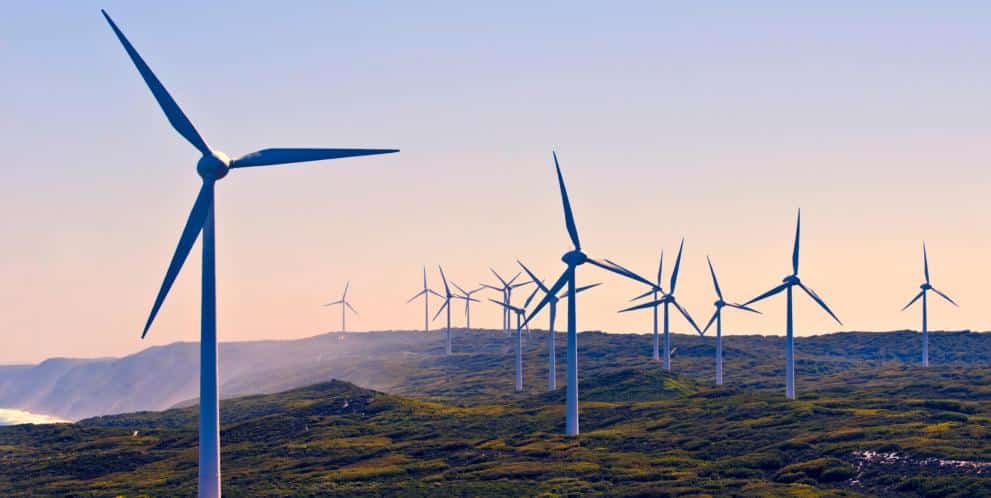Wind energy farms in Australia are transforming the country’s power grid, economy, and environmental outlook—ushering in a new era of clean, sustainable energy. As global attention intensifies on reducing carbon footprints and accelerating the shift away from fossil fuels, Australia stands at the forefront with its rapidly expanding wind power infrastructure. Today, wind is the second-largest renewable energy contributor to Australia’s electricity mix, generating more than 9% of the nation’s power needs as reported by the Clean Energy Council. With ambitious goals to reach net-zero emissions by 2050, the role of wind power is more vital than ever.
The country’s geographic advantage has made it an ideal location for wind development. Coastal regions in states like South Australia, Victoria, and Tasmania consistently record wind speeds of over 8.5 m/s, enabling high-efficiency energy generation. The Australian government, through initiatives from agencies like the Australian Renewable Energy Agency (ARENA), has championed this movement, providing grants and support for wind energy projects nationwide. Simultaneously, independent operators and multinationals such as Tilt Renewables, Acciona Australia, and Neoen Australia have invested heavily in large-scale wind farm installations—driving forward both innovation and economic opportunity.
Major projects like the Macarthur Wind Farm in Victoria and Coopers Gap Wind Farm in Queensland showcase the vast scale and technological prowess behind today’s wind infrastructure. Facilities like these are not only capable of powering hundreds of thousands of homes but are also creating ripple effects across local economies. The Australian Bureau of Statistics estimates that wind-related construction and operations supported over 2,800 jobs in 2023—a figure set to increase as more projects enter the pipeline. Furthermore, battery storage solutions like the Hornsdale Power Reserve, developed in collaboration with Tesla, are helping resolve intermittency issues and improve grid reliability across states.
Wind energy farms in Australia are also making a substantial environmental impact. According to the Clean Energy Regulator, wind power helped avoid more than 15 million tonnes of carbon dioxide emissions in 2023 alone. These reductions are essential in meeting both state-level and national climate commitments. In states such as South Australia—where over 70% of electricity comes from renewables—wind is now a cornerstone of public energy policy. With support from institutions like Geoscience Australia and industry bodies like the Smart Energy Council, developers are utilizing the latest data to identify optimal locations and deploy advanced turbine technology for maximum efficiency.
However, challenges remain. Grid integration, community concerns, and regulatory bottlenecks continue to impact development timelines. Yet, with innovative solutions such as larger turbines, dynamic forecasting tools, and local community funding models, the future of wind energy looks bright. As outlined in reports by AEMO, integrated planning and energy storage will be key to unlocking even greater potential. With these strategies in motion, wind energy farms in Australia are poised to play a central role in the nation’s clean energy transition.
Harnessing the Wind: Australia’s Renewable Revolution
Australia’s wind energy journey
Australia began harnessing wind energy at scale in the late 1990s. Since then, the industry has expanded significantly, with more than 100 wind farms currently operating across the country. According to the Clean Energy Council, wind power supplied 9.2% of Australia’s total electricity generation in 2023. This growth has positioned wind as the second-largest renewable energy source after solar.
Government policies driving expansion
Government incentives like the Renewable Energy Target (RET) have played a critical role. The RET aimed to produce 33,000 GWh of renewable electricity by 2020—a goal achieved ahead of schedule. Newer initiatives such as the Australian Renewable Energy Agency (ARENA) have further boosted investments in wind energy farms in Australia.
Wind potential across the continent
Australia’s geography makes it ideal for wind energy. Coastal regions in South Australia, Tasmania, and Victoria experience consistent high-speed winds. Studies by Geoscience Australia indicate wind speeds averaging 8.5 to 9.0 m/s in key areas, making them optimal for turbine performance.
Rising energy demands and green alternatives
With electricity demand projected to increase by 20% by 2030, renewable sources are vital. Wind energy farms in Australia are seen as key solutions to meet this demand while reducing greenhouse gas emissions. Wind power helped avoid over 15 million tonnes of carbon dioxide emissions in 2023 alone.
Private sector investments accelerating growth
Corporations like Acciona, Tilt Renewables, and Neoen have invested billions into wind farm projects. The 530 MW Stockyard Hill Wind Farm in Victoria, for example, represents a $900 million investment. Such projects are paving the way for Australia to become a global leader in wind power technology.
Iconic Wind Farms Shaping Australia’s Energy Landscape
Macarthur Wind Farm: The giant of the south
Located in Victoria, the Macarthur Wind Farm is one of the largest in the Southern Hemisphere. Commissioned in 2013, it features 140 turbines and a capacity of 420 MW—enough to power 220,000 homes annually. It symbolizes the scale possible for wind energy farms in Australia.
Snowtown Wind Farm: South Australia’s pride
Snowtown Stage 1 and 2 collectively offer 370 MW of capacity. The site benefits from the region’s strong westerly winds, producing more than 1,200 GWh annually. These installations make South Australia a front-runner in renewable integration, where 70% of energy already comes from renewables.
Granville Harbour Wind Farm: Tasmania’s sustainability model
Tasmania’s Granville Harbour Wind Farm adds 112 MW of clean energy to the grid, contributing significantly to the island’s 100% renewable electricity status achieved in late 2020. Wind energy farms in Australia like Granville help meet regional sustainability goals effectively.
Coopers Gap Wind Farm: Queensland enters the race
Commissioned in 2020, the Coopers Gap Wind Farm is Queensland’s largest, with a capacity of 453 MW. It supplies energy to approximately 264,000 homes and represents a shift in traditionally coal-dependent states toward greener solutions.
Hornsdale Wind Farm: More than just energy
Situated in South Australia, Hornsdale is well-known not just for its 315 MW wind capacity but also for its co-located Tesla battery system. This integrated setup provides grid stability and sets a benchmark for innovation among wind energy farms in Australia.
Economic and Environmental Impact of Wind Energy in Australia
Job creation and local economy boost
Wind projects generate significant employment opportunities. According to the Australian Bureau of Statistics, the wind energy sector employed over 2,800 people in 2023, with expectations to surpass 4,000 by 2026. Construction and ongoing operations bring income to regional communities.
Reducing carbon emissions
Wind energy farms in Australia prevented around 15.3 million tonnes of CO₂ emissions in 2023, according to the Clean Energy Regulator. Each megawatt-hour (MWh) of wind energy displaces roughly 0.9 tonnes of CO₂ when replacing fossil-fuel generation.
Lower electricity costs over time
Wind energy contributes to wholesale electricity price reduction. AEMO reports show that the integration of renewables led to a 10.2% decrease in wholesale electricity prices in South Australia between 2022 and 2023, thanks in part to expanded wind capacity.
Long-term cost efficiency
Levelized Cost of Electricity (LCOE) for wind is now as low as AU$50/MWh, making it competitive with coal and gas. Wind energy farms in Australia are among the most cost-effective methods to meet national energy needs while staying sustainable.
Land use and environmental considerations
Modern wind farms require around 0.1 hectare per MW for turbine bases, allowing co-use of land for agriculture. Environmental impact assessments ensure minimal disruption to wildlife, and newer turbine designs reduce bird and bat collisions by up to 70%.
Challenges and Innovations in Australia’s Wind Power Sector
Intermittency and grid reliability
A key issue with wind power is variability. Wind energy farms in Australia face fluctuations in output due to changing wind speeds. To combat this, grid operators are adopting advanced forecasting tools and demand-response strategies.
Storage solutions on the rise
Battery storage is becoming essential. South Australia’s Hornsdale Power Reserve (150 MW/193.5 MWh) helps balance supply during peak times. New projects like Victoria’s Big Battery (300 MW/450 MWh) further support integration of wind power into the national grid.
Community acceptance and noise concerns
Some residents near wind farms raise concerns about noise or visual impact. Projects like the Rye Park Wind Farm have implemented community benefit programs, offering grants and infrastructure upgrades to foster local support.
Technology pushing efficiency
Modern turbines are more efficient and quieter. Turbines now exceed 5.5 MW per unit, and blade lengths have increased to 80 meters or more. Wind energy farms in Australia are becoming more productive, with higher capacity factors reaching 45–50%.
Policy and regulatory hurdles
While federal and state policies generally support renewables, delays in approvals and transmission planning hinder progress. The Energy Infrastructure Commissioner continues to review and streamline processes to help fast-track wind farm development and integration.




